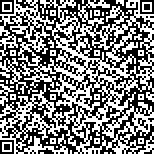| 引用本文: | 时永强,左涛,袁伟,王俊.夏季崂山湾浮游动物群落结构及空间分布特征.海洋与湖沼,2017,48(5):990-997. |
| |
|
| |
|
|
| 本文已被:浏览 2210次 下载 1750次 |

码上扫一扫! |
|
|
| 夏季崂山湾浮游动物群落结构及空间分布特征 |
|
时永强1,2,3, 左涛1,2,3, 袁伟1,2,3,4, 王俊1,2,3,4
|
|
1.中国水产科学研究院黄海水产研究所 青岛 266071;2.青岛海洋科学与技术国家实验室海洋生态与环境科学功能实验室 青岛 266237;3.农业部海洋渔业可持续发展重点实验室 青岛 266071;4.山东省渔业资源与生态环境重点实验室 青岛 266071
|
|
| 摘要: |
| 根据2014年8月浅水Ⅱ型浮游生物网在崂山湾海域调查获取的样品,结合同步环境调查资料,研究了崂山湾浮游动物种类组成、群落结构及空间分布。共鉴定浮游动物40种(类),其中浮游幼虫16类,占种类数的40.0%,桡足类14种,占种类数的35.0%,水螅水母类4种,枝角类、毛颚类各2种,原生动物和被囊类各1种。夜光虫丰度在各站位均很高,去除夜光虫丰度后,浮游动物优势种为小拟哲水蚤、异体住囊虫、强额孔雀水蚤和洪氏纺锤水蚤。根据浮游动物群落结构相似性,利用聚类分析可将19个调查站位的浮游动物群落划分到四个群组中。群组Ⅰ所在站位平均水深最浅,指示种最多,其中夜光虫、半球美螅水母、小拟哲水蚤和背针胸刺水蚤为其特有指示种,短尾类溞状幼虫的平均丰度在该群组最高;群组Ⅳ所在站位平均水深最深,靠近外海,指示种最少,圆唇角水蚤为其指示种,桡足类无节幼虫的平均丰度在该群组最高,群组Ⅳ与群组Ⅰ的浮游动物群落结构差异最大,无共有指示种;群组Ⅱ和群组Ⅲ为过渡群组,其部分指示种与其他群组共享。水深和表层叶绿素a浓度对浮游动物群落的变化具有较大影响。 |
| 关键词: 浮游动物 群落结构 空间分布 崂山湾 |
| DOI:10.11693/hyhz20170200035 |
| 分类号: |
| 基金项目:国家科技支撑计划项目,2012BAD18B01号;国家基金委-山东省联合基金项目,U1606404号;中国水产科学研究院黄海水产研究所中央级公益性科研院所基本科研业务费,20603022016020号;中国科学院海洋生态与环境科学重点实验室、青岛海洋科学与技术国家实验室海洋生态与环境科学功能实验室开放基金,KLMEES201605号。 |
附件 |
|
| COMMUNITY STRUCTURE AND SPATIAL DISTRIBUTION OF ZOOPLANKTON IN LAOSHAN BAY IN SUMMER |
|
SHI Yong-Qiang1,2,3, ZUO Tao1,2,3, YUAN Wei1,2,3,4, WANG Jun1,2,3,4
|
|
1.Yellow Sea Fisheries Research Institute, Chinese Academy of Fishery Sciences, Qingdao 266071, China;2.Laboratory for Marine Ecology and Environmental Science, Qingdao National Laboratory for Marine Science and Technology, Qingdao 266237, China;3.Key Laboratory of Sustainable Development of Marine Fisheries, Ministry of Agriculture, Qingdao 266071, China;4.Key Laboratory for Fishery Resources and Eco-Environment, Shandong Province, Qingdao 266071, China
|
| Abstract: |
| Zooplankton samples were collected with a plankton net (0.08m2 mouth area and 160mm mesh) in Laoshan Bay, Qingdao, in August 2014. The species composition, community structure, and spatial distribution of zooplankton were studied with simultaneously measured environmental parameters. Forty species/taxa of zooplankton were identified, including 16 pelagic larvae, 14 copepod species, accounting for 40.0% and 35.0% of the total taxa, respectively, and 4 species of Hydromedusea, 2 species for each of Cladocera and Chaetognatha, 1 species for each of Protozoa and Tunicata. Noctiluca scintillans was in high abundance at all stations. Paracalanus parvus, Oikopleura dioica, Parvocalanus crassirostris, and Acartia hongi became the dominant species after removing N. scintillans. Based on the similarity of zooplankton community structure, the 19 sampling stations can be separated into four groups by cluster analysis. Group Ⅰ was in the shallowest depth and had the most number of indicator species, including N. scintillans, Clytia hemisphaerica, P. parvus and Centropages dorsispinatus, and Brachyura zoea larva had highest average abundance in Group Ⅰ. Group Ⅳ was located offshore in the deepest depth, and had only one indicator species, i.e., Labidocera rotunda, and Copepoda nauplius larva had highest average abundance in Group Ⅳ. Group Ⅰ and Ⅳ were distinctly different in zooplankton community structures, sharing no indicator species. Groups Ⅱ and Ⅲ were transitional groups, sharing some common indicator species with other two groups. Depth and sea surface chlorophyll a concentrations were more influential on the spectra of zooplankton community than other environmental factors. |
| Key words: zooplankton community structure spatial distribution Laoshan Bay |
|
|
|
|
|
